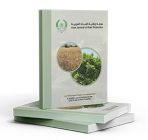E.M. Hussein, Sh.F. Abd El-Sayed and M.A.A. W. El-Atby*
Plant Protection Department, Faculty of Agriculture, University of Basrah, Iraq.
*Email address of the corresponding author: [email protected]
Received: 24/8/2023; Accepted: 30/7/2024
A Regional Scientific Journal Published Four Times a Year by the Arab Society for Plant Protection
E.M. Hussein, Sh.F. Abd El-Sayed and M.A.A. W. El-Atby*
Plant Protection Department, Faculty of Agriculture, University of Basrah, Iraq.
*Email address of the corresponding author: [email protected]
Received: 24/8/2023; Accepted: 30/7/2024
Jujube trees are becoming economically important in Iraq, and their commercial cultivation is expanding fast in the southern regions of the country. This tree is affected by various biotic and abiotic factors, including insect pests and pathogens. The aim of this study was to isolate and identify the fungi associated with the flathead borer Lampetis mimosae. The results of the study concluded that 12 species of fungi belonging to seven genera were recorded, namely Aspergillus niger, Aspergillus terreus, and Aspergillus sp. Aspergillus soja, Acremonium fusidioides, Acremonium kiliense, Alternaria alternata, Humicola grisea, Fusarium equiseti, Fusarium semitectum, Scolpulariopsis acremonium, Verticillium lecanii. The highest occurrence and frequency were that of Aspergillus niger and Alternaria alternata, and the lowest of Scolpulariopsis acremonium and Verticillium lecanii. This study contributes to understanding the interaction between the flathead borer and its associated fungi in causing damage to the huhuba trees, with more in-depth studies needed in the future to better understand this association.
Fungi, pathogens, stem borer, Iraq.

